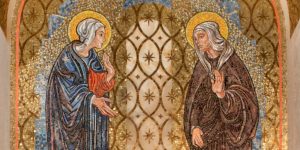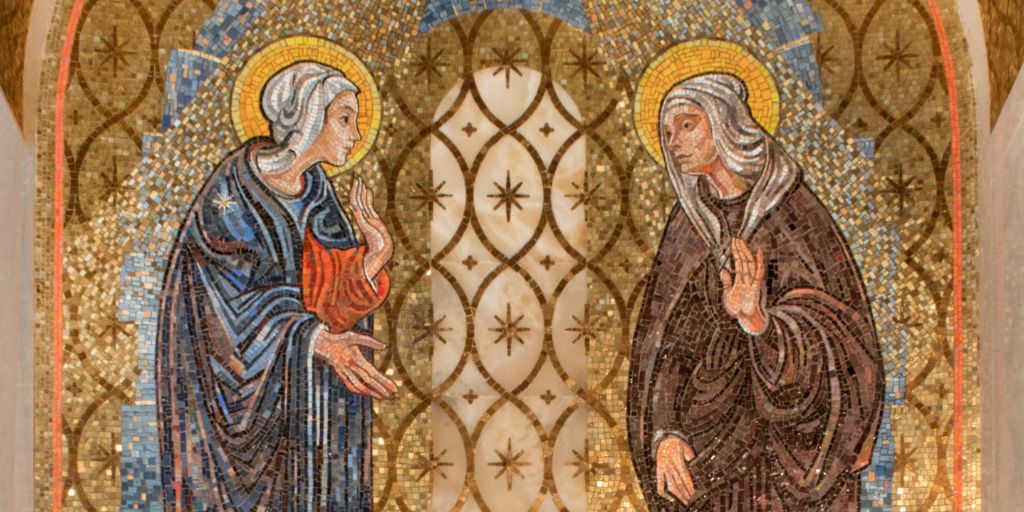
As we prepare our hearts for the celebration of Christ’s birth, we invite you to reflect on the stories of three women saints portrayed in the art of the Basilica. From Mary, the Christ-bearer, to Saint Lucy, whose shining example of faith has stood as a symbol of light in the darkness throughout the centuries, each of them has something to teach us this Christmas season.
Mary, the Blessed Mother
The most well-known woman in the Bible, Mary was the young virgin of Nazareth who conceived Jesus, the Son of God, through the Holy Spirit. When the angel Gabriel told her that she would bear the Christ child, she responded in humility and rejoiced in the Lord’s greatness, saying:
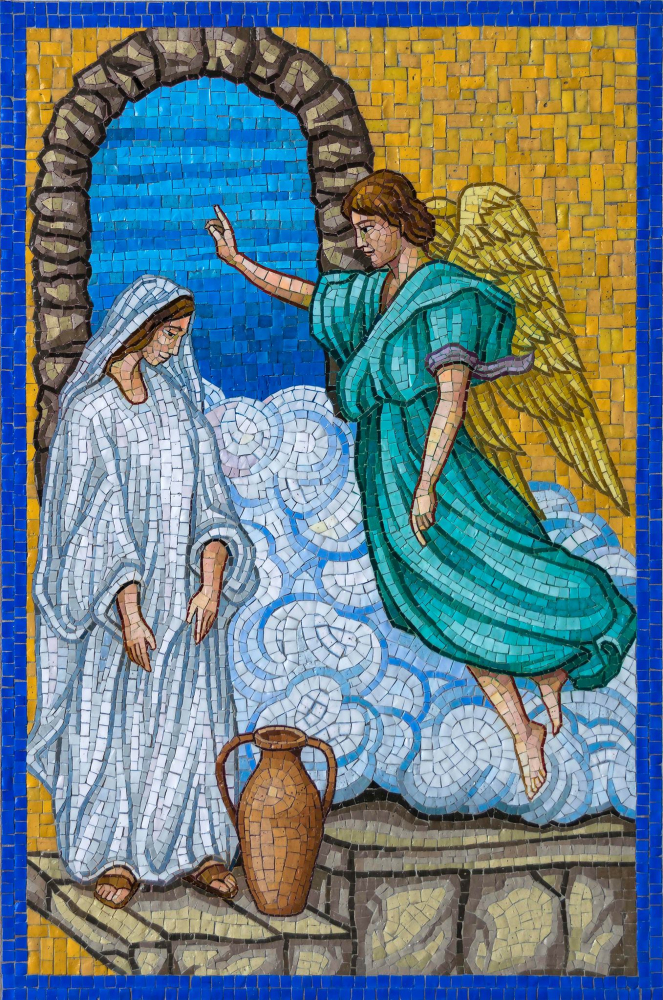
“My soul proclaims the greatness of the Lord;
my spirit rejoices in God my savior.
For He has looked upon His handmaid’s lowliness;
behold, from now on will all ages call me blessed.
The Mighty One has done great things for me,
and holy is His name.
His mercy is from age to age
to those who fear Him.
He has shown might with His arm,
dispersed the arrogant of mind and heart.
He has thrown down the rulers from their thrones
but lifted up the lowly.
The hungry He has filled with good things;
the rich He has sent away empty.
He has helped Israel His servant,
remembering His mercy,
according to His promise to our fathers,
to Abraham and to his descendants forever.” — Luke 1:46-55
Mary trusted in God throughout her pregnancy and did not doubt Him as she traveled to Bethlehem with Joseph and gave birth in a stable, or when she and Joseph were forced to flee to Egypt as King Herod sought to have Jesus killed. No matter the circumstance, she submitted herself completely to God’s will for her life, trusting in His divine plan. Today, her spirit of unhesitating obedience serves as an enduring example of holiness.
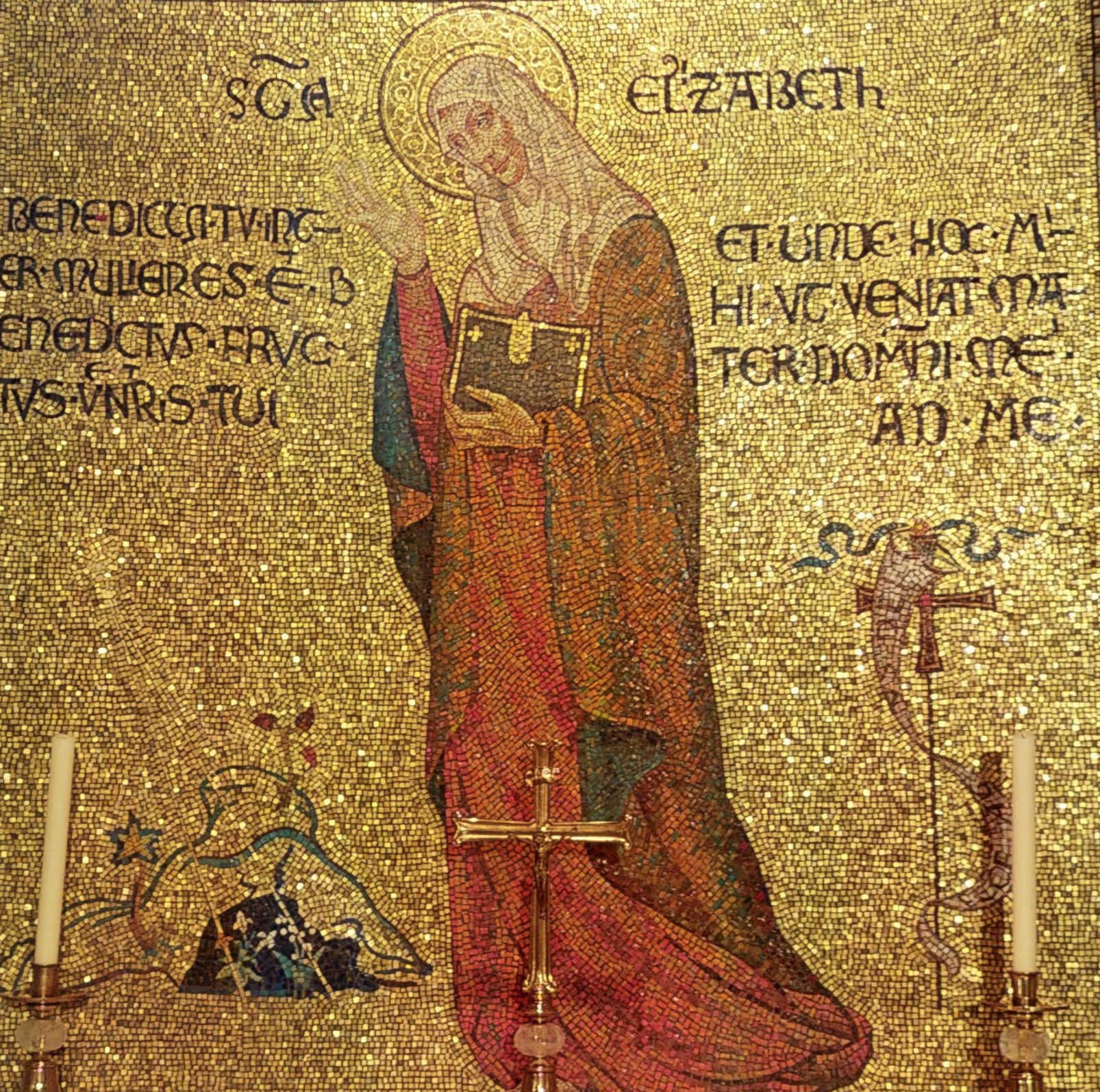
Saint Elizabeth
The wife of a priest, Saint Elizabeth lived during the reign of King Herod. For many years, she and her husband were unable to have children. However, they remained faithful to the Lord, and He answered their prayers. When she discovered that she was pregnant, she declared that the Lord had “seen fit to take away [her] disgrace,” (Luke 1:25).
Elizabeth was also related to Mary, whose pregnancy story intersects with her own. It was upon Mary’s visit that Elizabeth called Mary blessed, and Mary responded with what we now know as the Magnificat. Through the hopelessness of Elizabeth’s infertility, God demonstrated His provision by giving her a son who would play a significant role in Jesus’ ministry as John the Baptist. Ultimately, John’s birth reflects the theme of expectation and fulfillment seen in the Nativity, prophesied throughout the Old Testament.
Isaiah 40:3 relates:
“A voice proclaims: In the wilderness prepare the way of the Lord! Make straight in the wasteland a highway for our God!”
Elizabeth fully trusted in God’s sovereignty over her life, and her faithful heart was rewarded.
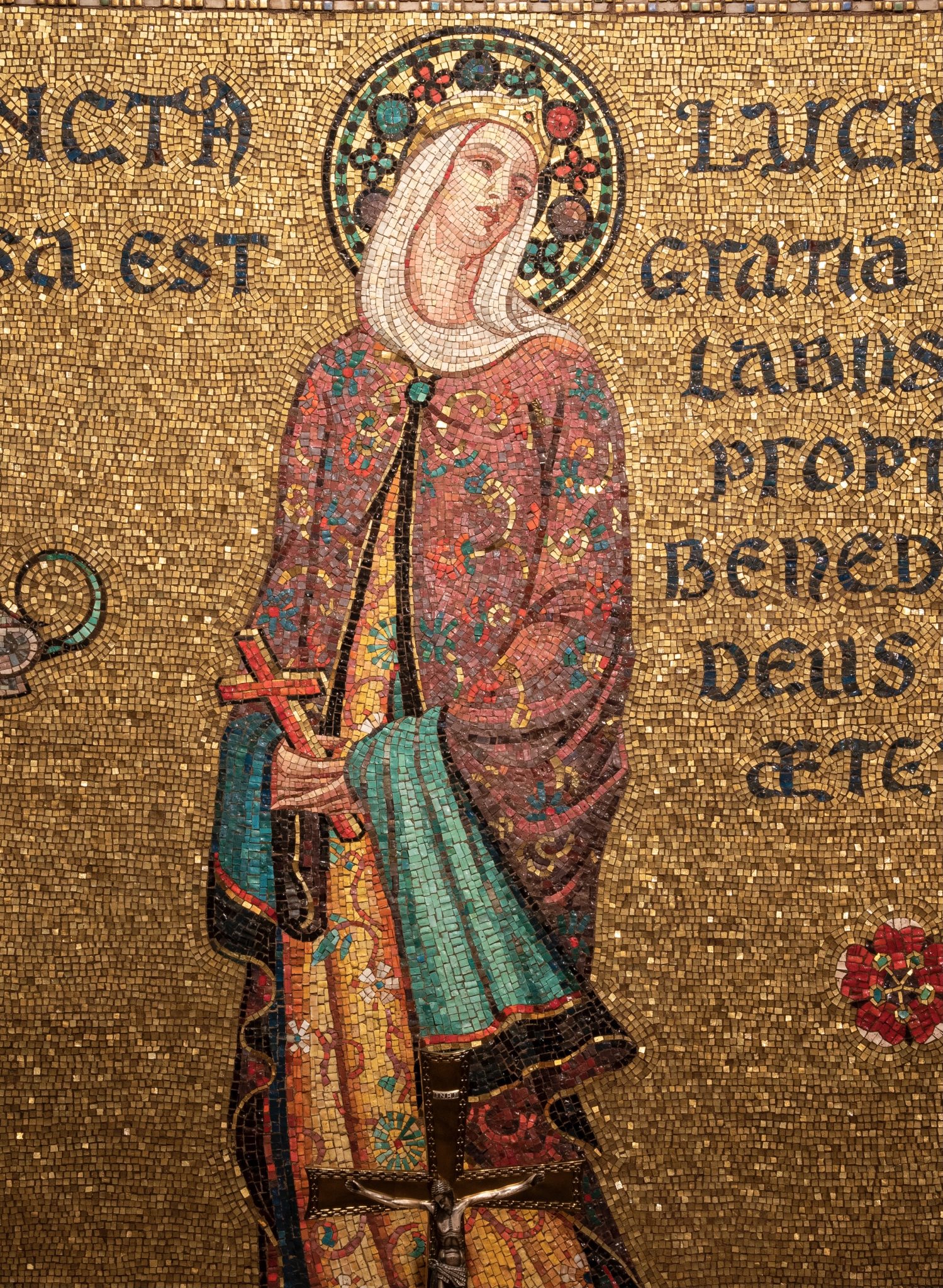
Saint Lucy
Born in Sicily, St. Lucy converted to Christianity after her blind mother recovered her eyesight. Tragically, she was martyred at a young age under the persecution of the Emperor Diocletian, although the reason for her death is unclear. Prevailing tradition holds that a spurned suitor reported her to the governor, who had her killed for her faith. Another tradition holds that, as part of her torture, she was blinded, but her eyesight was miraculously restored. For this reason, she is the patron saint for eyesight.
In certain Scandinavian countries, Saint Lucy’s feast is commemorated with each town appointing a girl to be Saint Lucy. The girl wears a white dress with a red sash and a lighted wreath on her head, parading through the streets followed by other children. The wreath of candles comes from a tradition of St. Lucy bringing food to Christians hiding in the catacombs: in order to have her hands free to carry more provisions, she wore a lighted wreath of candles, bringing light into the darkness of the catacombs, while the white robe and red sash symbolize her virginity and martyrdom.
As we reflect on the significance of light this Christmas, let us draw our thoughts toward the greatest light of all – our Lord Jesus Christ:
“The people who walked in darkness
have seen a great light;
Upon those who lived in a land of gloom
a light has shone.” – Isaiah 9:1
Sources:
Butler’s Lives of the Saints, ed. by Bernard Bangley.
The Way of Saints, Tom Cowan.

